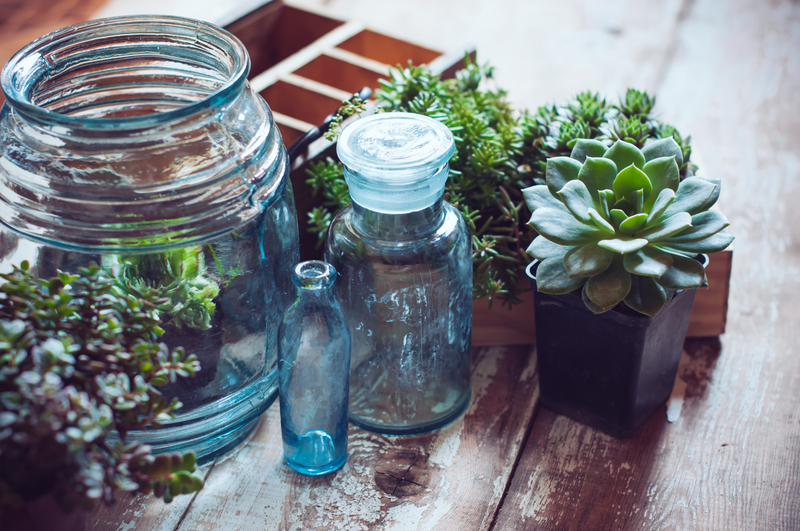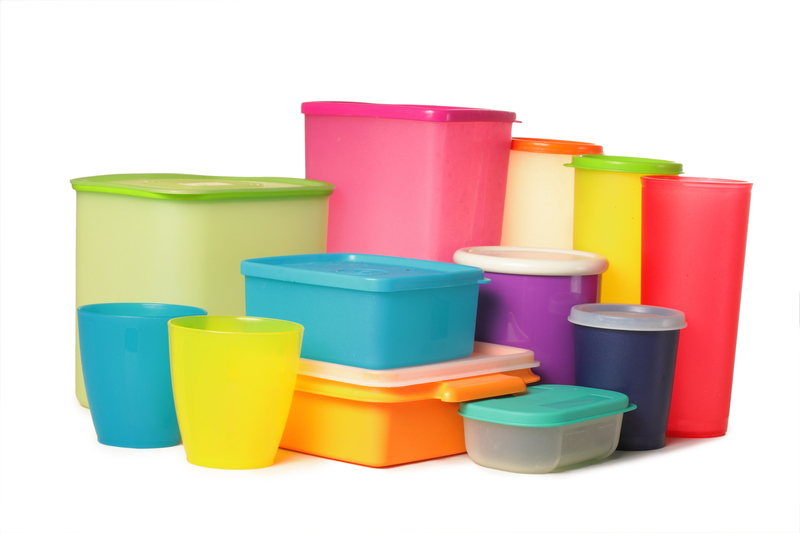Embrace Effortless Plant Pot Disposal Methods: A Comprehensive Guide
Whether you're a passionate gardener or an occasional plant parent, you're likely to accumulate a collection of old plant pots over time. These pots, ranging from traditional terracotta to modern plastic or ceramic, can become quite a challenge to dispose of sustainably when they are no longer needed. Fortunately, embracing effortless plant pot disposal methods can transform your gardening routine and support eco-friendly goals.
In this article, you'll discover:
- Why proper plant pot disposal matters
- Efficient recycling and reuse options
- Clever upcycling and donation strategies
- Sustainable tips for handling every pot material
- How to avoid common plant pot disposal mistakes
Read on to learn how easy plant pot disposal can be and why it matters for your garden and the planet.

Why Should You Care About Proper Plant Pot Disposal?
It's tempting to simply throw away unwanted plant pots, but this approach often leads to environmental harm, wasted resources, and landfill overflows. With garden centers and nurseries distributing millions of pots each year, the cumulative impact is significant. Embracing efficient plant pot disposal methods is a crucial aspect of sustainable gardening.
The Environmental Impact of Plant Pot Waste
Most plant pots are made from plastics. According to the Horticultural Trades Association, the UK alone uses over 500 million plastic pots annually. Unlike biodegradable plant pots, plastic pots persist in the environment for centuries if not disposed of properly. Terracotta and ceramic pots can also clutter landfills and take up valuable space.
Improper disposal has several downsides:
- Plastic waste pollutes the soil and can leach toxins
- Non-biodegradable materials pile up in landfills
- Loss of reusable resources that could benefit local gardeners
- Unnecessary production of new pots increases carbon emissions
Embracing easy solutions for plant pot disposal helps protect the environment, saves energy, and makes gardening more sustainable.
Best Effortless Plant Pot Disposal Methods
Ready for simple, effective strategies? Here are the leading ways to embrace plant pot disposal without the hassle.
1. Recycle Plastic and Terracotta Pots Locally
Check with your curbside recycling program or local council. Many regions now accept clean, rigid plastic garden pots, especially if labeled with recycling codes 2 (HDPE) or 5 (PP). Be sure to rinse out soil and plant residues for smooth processing.
For terracotta pots, check local recycling centers or garden waste facilities--some accept broken ceramics for aggregate or construction use.
Tips for effortless recycling:
- Remove all dirt and stickers to ensure the pots are processed and not discarded as contaminants
- Separate different materials: Plastic, ceramic, and terracotta should be sorted before recycling
- Batch your pots: Collect a stack for one trip to save time and effort
- Contact centers in advance to verify their policies and accepted materials
2. Participate in Plant Pot Take-Back Schemes and Drop-Off Initiatives
Leading garden centers and nurseries often run take-back programs, allowing customers to return old pots for reuse or recycling.
Well-known chains offering these services include:
- B&Q
- Home Depot
- Lowe's
- Independent local nurseries
Some programs also accept flats, trays, and cell packs--be sure to ask! Returning pots whenever you purchase new plants supports closed-loop recycling in horticulture industries.
3. Donate Gently Used Pots to Schools, Community Gardens, or Plant Swaps
If your pots are in usable condition, donation is one of the most sustainable options. Many schools, community gardens, horticultural societies, or neighborhood plant swaps welcome extra pots for starting seedlings, plant sales, or educational projects.
Here's how to donate pots thoughtfully:
- Clean and dry each pot to prevent spreading pests or disease
- Sort by size and type--small pots for seedlings, large for mature plants
- Contact organizations ahead of time to ask about current needs
- Label or bag sets for easy distribution
Not only does donation save pots from the landfill, but it also helps others cultivate their green spaces with minimal investment.
4. Get Creative: Upcycle Old Pots for Fun and Practical Uses
Before disposing of plant pots, consider upcycling them in creative ways around your home and garden! Repurposing is fun, eco-friendly, and often requires no extra cost.
Try these inventive ideas:
- Turn pots into garden art - Paint or mosaic pots for unique displays
- Organize tools or supplies in the shed with sturdy containers
- Make fairy gardens, bird baths, or decorative lanterns
- Use small pots to sprout kitchen herbs or propagate succulents
- Stack and glue for a quirky garden sculpture
Upcycling reduces waste and adds personal flair to your outdoor and indoor spaces--embrace your creativity!
5. Explore Compostable and Biodegradable Pot Options
Some modern plant pots are produced from compostable materials--peat, coconut coir, or biodegradable plastics. These can be added directly to garden compost or planted in the ground, eliminating disposal challenges.
If you use biodegradable pots:
- Follow manufacturer instructions for composting or planting
- Check if additives or coatings might prevent breakdown
- Use these for annuals, herbs, or fast-growing vegetables for best results
By choosing biodegradable pots in future purchases, you'll embrace truly effortless disposal down the road!
Effortless Plant Pot Disposal by Material Type
Not all pots are created equal. Knowing how to properly dispose of each type can make the process seamless.
Plastic Pots
- Recycling: Look for codes 2 (HDPE) or 5 (PP). These are widely accepted by recycling schemes.
- Reuse: These are most versatile for upcycling, craft, or donation.
- Take-Back: Use nursery return programs wherever possible for closed-loop recycling.
Ceramic and Terracotta Pots
- Reuse: These durable pots are excellent for donation or upcycling.
- Broken Pots: Use as drainage crocks in new plantings or donate to mosaic makers and art teachers.
- Recycling: Some centers accept as construction aggregate or for pottery programs--call ahead.
Biodegradable and Fiber Pots
- Compost: Plant directly into the garden or compost bin if label indicates (check for plastic lining)
Pro Tip: When possible, choose plant pots with clear recycling codes or made from sustainable materials in your next garden project. It simplifies disposal and supports a circular economy.
Common Mistakes in Plant Pot Disposal--and How to Avoid Them
- Tossing all pots in the trash bin - Most can be recycled or donated! Always check before you dump.
- Mixing dirty or soiled pots with recycling - Soil and organic matter can contaminate recycling loads.
- Ignoring take-back availability - Most garden stores now accept old pots; don't miss these convenient programs.
- Overlooking creative reuse - With a little imagination, even cracked or odd-sized pots find new life.
- Buying new plastic pots unnecessarily - Reduce waste by reusing or opting for sustainable alternatives.
Encourage a Circular Culture: How Garden Centers and Gardeners Benefit
When you embrace effortless plant pot disposal, you're not just reducing your own waste. You contribute to a circular economy--where products are reused, recycled, or composted--slowing the demand for raw materials and lowering carbon footprints.
Garden centers benefit when:
- Returned pots help offset nursery costs
- Lowered disposal fees lead to savings for customers
- Communities support eco-friendly reputations and practices
Home gardeners succeed by saving money, decluttering, and sharing resources through donation and creative upcycling.
You can amplify the positive impact by spreading awareness, encouraging your local businesses, and helping neighbors embrace easy plant pot disposal methods too.
Frequently Asked Questions about Plant Pot Disposal
Can I put plant pots in my curbside recycling?
It depends on material and local policies. Many areas accept rigid plastics marked with #2 or #5. Always clean the pots and check with your local recycling provider before placing in the bin.
What about black plastic pots?
Black plant pots are often not detected by recycling sorting machines. Some nurseries accept them even if your curbside program doesn't, so use take-back options whenever possible.
Can broken terracotta pots be recycled?
Some facilities accept broken ceramics for reuse in construction or art. Otherwise, smash them for garden drainage or donate to local art programs.
Are biodegradable pots better for the environment?
Biodegradable pots like peat or rice hulls break down naturally, so they're preferable--but check for additives that could hinder composting.
Can I burn my old plant pots?
Never burn plastic pots--this releases harmful toxins. Biodegradable pots may be added to a well-managed compost pile instead.

Your Action Checklist: Embracing Effortless Plant Pot Disposal
- Sort your used pots by material type
- Clean pots gently to remove soil, residue, and stickers
- Investigate local recycling, take-back, or donation options
- Repurpose or upcycle creatively at home or in the community
- Plant biodegradable pots directly or compost appropriately
- Share your pots and disposal knowledge with fellow gardeners
Conclusion: Embrace Effortless Plant Pot Disposal Today
Effortless plant pot disposal methods are accessible, eco-friendly, and often rewarding in many ways. From recycling and upcycling to donation and composting, these strategies help you keep your garden and the earth cleaner.
Make simple, meaningful changes: Collect old pots, find a local drop-off site, repurpose them for DIY projects, or offer them to a good cause. By embracing easy and sustainable plant pot disposal methods, you become part of a growing community dedicated to greener gardening and a healthier planet.
Ready to declutter your gardening shed and make a positive impact? Start sorting your plant pots today and discover just how easy and rewarding sustainable disposal can be!